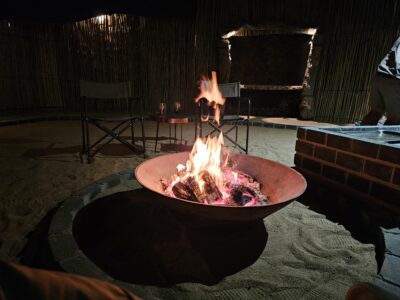Everett Headley 10.23.24

In the wetter parts of the Kalahari desert—among the acacia and white shepherd trees—wander bands of the iconic zebra. For most, it is a species only met in zoos and described as a “horse in pajamas.” And this connection forms a taboo about the line at which an equine becomes edible. But I make sure to eat what I kill.
The finest plains game
Namibia is the dream of Africa with its reaching views and incredible wildlife. Its geodiversity stretches from renowned sandy dunes into dark jungles guided by darker rivers. The plains zebra finds its home between these extremes. Burchell’s zebra have done well and populations are controlled through hunting. Their distinguishing “shadow stripe” accents their contrasting beauty.
Despite their similarities to ranch horses, you could never mistake these wild beasts for domesticated horses. Every wild animal has a uniqueness in its elusion and flight, making its pursuit worthwhile. Eyes and ears work precisely in unison to protect the zebra from nearly any angle. Their fondness to mingle closely with their herd and dash whenever the notion takes them makes for a challenging hunt. Many stalks ended with us pointing at the ground and muttering, “Well, at some point there was a zebra there.”
Through the acacia over two hundred yards away, one female caught our movement as we angled for a shot. Turning directly at us, she snorted an alert. Before we could raise our glasses to see, all that was left was a cloud of red dust. My successful stalk was brought to an end as we tracked a herd traveling with a handful of eland. Everything that needed to align for a shot did so, and moments later I placed my hands on her.
When in Africa…
The following night, zebra was on the menu. It is something of a local favorite and thoroughly enjoyed by all. The stigma accompanying eating horse in the United States doesn’t translate into African cultures. Many times it would be served as the main dish at celebrations and important events. Dining on zebra brought honor to traditions and strengthened bonds between guests.


I especially looked forward to tasting the forbidden flesh of this new protein and reconnecting with it after the kill. For every animal I have pursued, an immense satisfaction in the hunt has grown when I see it prepared on a dinner table. Everything about being a hunter comes to fullness with the first bite. Zebra is not something that can be found packaged and ready; it has to be found and overcome before it can be served. It is a meat full of purpose and intention.
We gathered around the firepit for a sort of braai and I watched as my professional hunter brought out a tray. The hot coals flashed red as he sorted them under the grill. Some he thinned before placing the filet above them, the rest he heaped for kebabs. Zebra-two ways would give us flavors from the lightest touch of fire to the blackened and charred. I swallowed an eagerness for dinner to begin. The familiar aroma of roasting cuts mingled with the sounds of it sizzling.
Dinner did not disappoint


Throughout my hunts, I have been deliberate in my notes. Beside recounting the hunts and the places ventured, I have also recorded how these new animals performed as table fare. The zebra filet occupied a full third of my plate, another third for the kebabs, and the last open area for the vegetables. I silently wondered what could have gone there instead, making my plate zebra-three ways. Appropriate time had been given to both preparations to rest, but I could still see a pleasing glistening telling me none of this would be dry.
I cut into the filet to inspect the medium cook. Good. Too often game is overcooked and anything beyond a red center destroys any chance at being enjoyed. As I began to chew, I waited for the off-putting “gamey” flavor, but it never came. The seasoning carried the light smoke from the wood and I enjoyed what is certainly one of the finest meats a sportsman can know. I didn’t need the knife to cut it, but I used it anyway to keep etiquette. It was lean but kept a sweetness akin to pronghorn (the kind that is treated well in the field all the way to the table).
I was a few bites into the steak before I remembered the skewers. Good food needs caramelization to bring out its best notes, including meat. The same flavors filled my senses, but a new and subtle earthiness lingered. It was light and just distinct enough to know that this is how zebra was supposed to taste. The soft texture reminded me of a $200 wagyu ribeye I once had in Las Vegas at a place with a Michelin star. If I factored in all my costs for this trip, this one bite might have been the same price, but no doubt it would have been worth it.

